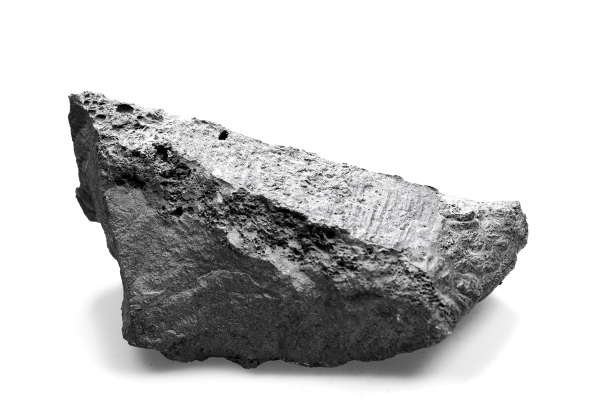Iron ores prices forecasts
Financial prices of iron ores traded in China drive relative physical prices in both Europe and the US
Published by Luca Sazzini. .
Non Ferrous Metals Forecast
Iron ores are the key input for blast furnace steel production. The analysis of their price dynamics therefore plays a particularly important role in the study of the cost conditions of steel products.
In order to optimise their logistics and efficient utilisation, iron ores are agglomerated by turning "fines" (small ore particles) into larger, more manageable lumps. There are two main types of iron ore agglomerates:
- pellets of iron ore: which are small spheres created by compressing/compacting iron ore fines. The pellets are then hardened in a thermal process, making them suitable for use in blast furnaces or direct reduction furnaces.
- sinter of iron ore: which is an agglomerate formed from iron ore fines, together with other materials to improve its performance in steelmaking.
In the financial markets, iron ore is listed on both the Chicago Mercantile Exchange (CME) and the Dalian Commodity Exchange (DCE), in the fines merceology.
Below is a graph depicting the price quotations on the two different exchanges.
China Iron Ores Financial Prices

The graph shows very similar dynamics between the prices of the two exchanges, since they have similar commodity products as underlyings, traded on the same Chinese market. The only difference between the two underlyings concerns the percentage of iron contained within the ore: in the CME-listed product this percentage is 62%, while in the DCE product the percentage of iron is 61%.
To assess whether or not iron ore prices are formed globally or regionally, it is useful to compare the financial prices on the Chinese market with the physical prices on the European and American markets.
The two financial prices are then compared with the price of iron ore imported into the European Union.
Comparison of Chinese financial prices and European customs prices of iron ores

The graph shows very similar price dynamics between the prices of iron ores in China and the prices of iron ores imported into the EU, thus signalling a high degree of integration between the Chinese (and more generally Asian) market and the European market.
To compare with the US market as well, since the US tends to import iron ores directly in the form of "agglomerates", which generally have a higher price than fines ores, the following graph compares the customs prices of European agglomerated iron ores with those of the US.
Comparison of EU and US customs prices

This comparison highlights the similarities between prices recorded at European customs and those recorded at US customs. Both prices show similar dynamics, but with slightly higher price levels for the US market.
Since the European price is simultaneously aligned with the Chinese market (for fines ores) and the American market (for agglomerates), it is possible to consider the world iron ores market as one large market where supply and demand interact to form a single world price. It is therefore possible to develop a forward-looking analysis of iron ores prices by analysing the entire world supply and demand.
PricePedia forecast
Within the PricePedia scenario there are forecasts, updated to January 2024, of monthly iron ore prices until 2025.
PricePedia forecast on iron ores

This forecast scenario shows a discrepancy between the development of financial prices and the development of customs prices. While financial prices for China iron ores, listed on the CME, are expected to fall as early as next month, customs prices are expected to rise until May, followed by a period of decline until the end of 2025. This deviation only depends on the lag with which, historically, physical prices have adjusted to financial prices The increase of customs prices in the first months of 2024 is therefore to be interpreted as a lagged contamination effect of financial prices towards physical prices. The increase of financial prices for iron ores is already a fact. Between the end of 2023 and the beginning of this year, the price of iron ores, quoted on the CME, rose from $106/tonne in May 2023 to $138/tonne in January 2024.
If we therefore exclude the financial price contamination phase, iron ores prices are expected to decline until at least December 2025. This forecast is consistent with both future price dynamics and Consensus Economics' surveys results.
Forecasts implicit in future prices
Analysing the prices of futures contracts makes it possible to find out the current price at which sellers are willing to sell a certain product at a future date.
Below is a comparison of spot and future prices of China iron ores, quoted at the CME and DCE.
| CME futures quotations | DCE futures quotations |

|

|
The graphs above show that China's iron ores financial prices are currently in a backwardation phase, i.e. a situation where future prices are lower than spot prices. This condition signals a situation where financial markets expect iron ores prices to fall in the future.
Consensus Economics forecasts
As a further source of comparison, the forecasts made by
Below is a graph depicting three forecasts made by Consensus Economics in three separate months: September 2023, November 2023 and January 2024.
Consensus Economics Iron Ores Price Forecasts

Over the past four months, although the physical price level has increased due to recent financial price movements, the expected dynamics of iron ores prices have been declining. In particular, the most recent forecasts show that prices are expected to fall more sharply in the near future, due to an increase in the price level between September 2023 and January 2024.
Conclusion
A comparison of iron ores prices in the Chinese, European and US markets showed that the price of iron ore can be considered a world price, as the price dynamics within the three markets proved to be very similar.
For the next 4 months, PricePedia's forecast indicates that there will be a phase of rising physical iron ores prices, due to the recent increases in financial prices between late 2023 and early 2024, followed by a subsequent price decline that will continue until late 2025.
The predictions of falling prices were confirmed both by the development of future prices, which are currently at lower levels than spot prices, and by surveys conducted by Consensus Economics.


